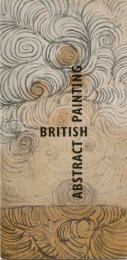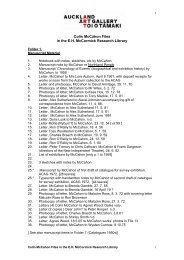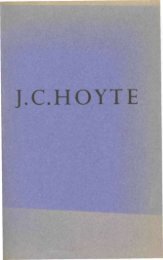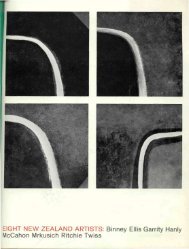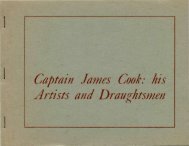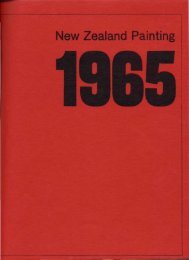You also want an ePaper? Increase the reach of your titles
YUMPU automatically turns print PDFs into web optimized ePapers that Google loves.
Metalsthe top of each other without removing the entire originallayer. To choose a suitable coating get professionaladvice.Copper and its Alloys—copper has been used in itspure form and in combination with other elements formingcommonplace alloys such as brass (copper and zinc)and bronze (copper and tin).The types of corrosion products formed on copperand its alloys depend on the metal composition. Themost common corrosion products are copper oxide, coppersulphate and copper carbonate. These are stable andprotect the underlying metal from further corrosion.They are sometimes produced artificially to provide theattractive green-brown patina on bronzes. This patina,whether natural or induced, should never be removed,as it is part of the antiquity of the object. Bronze andcopper objects with a patina do not require protectivecoatings unless they are displayed outside.To maintain a clean, unpatinated surface such asmight be required on colonial domestic ware and maritimeartefacts, regular polishing is needed. To avoidfrequent polishing, such artefacts can be given a protectivecoating such as described in the section dealingwith silver.Storage and DisplayMetals should be stored in as low a humidity as possible;35% relative humidity is the recommended internationalstandard. This is almost impossible to achievenaturally in New Zealand, but showcases or storage cupboardsact as reasonably effective humidity buffers inthemselves. For a more controlled low humidity, thecommercially available desiccant silica gel can be usedin showcases or small cabinets. The ratio of silica gel tovolume of air contained in the showcase is a precise oneand this information can be provided by a conservator.Because of their sensitivity to organic acid vapours,lead-based metals should never be stored in oak cupboardsor drawers or in wooden containers that havebeen adhered together with adhesives based onpolyvinyl acetate.Copper and its alloys should be kept away fromchlorides (such as common salt) to prevent bronze disease.Metals should not be subject to fluctuations in temperaturebecause of the rapid expansion and contractionthis causes.For permanent storage, silver objects should bewrapped in acid-free tissue paper and then in silvercloths to prevent contamination from the atmosphere.HandlingPerspiration from fingers and palms can initiate the corrosiveprocess, so it is very important to wear gloves.Always support a heavy artefact by the base when handling.50



